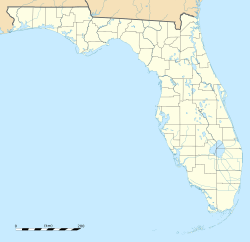Turner River Site facts for kids
Quick facts for kids |
|
|
Turner River Site
|
|
| Location | Collier County, Florida |
|---|---|
| Nearest city | Chokoloskee |
| NRHP reference No. | 78000263 |
| Added to NRHP | December 14, 1978 |
The Turner River Site is an important archaeological site in Florida. It is located in the Ten Thousand Islands area of Everglades National Park. This special place is listed on the National Register of Historic Places in the United States. This means it's a very important historical spot!
Contents
What is the Turner River Site?
The Turner River Site is a huge collection of ancient shell works. These are large piles and shapes made from shells by people long ago. The site is about 0.8 kilometers (0.5 miles) from where the Turner River meets the sea. It is also close to Chokoloskee Island.
The site covers about 12 hectares (30 acres) and is 0.4 kilometers (0.25 miles) long. It has at least 30 shell mounds that are close together. These mounds were built by people who lived there many years ago. The Turner River Site was the first place in the Ten Thousand Islands area to be dug up and studied by professional archaeologists.
How Was the Site Discovered?
Archaeologists first learned about the Turner River Site in 1900. A scientist named Aleš Hrdlička visited the site in 1918. He said it was "important to science" and should be protected as a "national reservation."
The first official dig by a professional archaeologist happened in 1955. This was done by William H. Sears. He noticed that the structures at Turner River were like those found at Key Marco and Chokoloskee Island. Sears believed that this area was a very important place where many people lived a long time ago.
What Did Archaeologists Find?
William Sears found soft, wet soil, called muck, between the mounds and on their lower parts. This muck contained midden materials. Midden is basically ancient trash, like leftover food and broken tools.
However, most of the mounds were made of clean shells. These shells were almost all small oyster shells. They had been placed on muddy areas that were underwater.
Sears also found pieces of broken pottery, called potsherds. By studying these potsherds, he figured out when people lived at the site. The pottery belonged to the Glades I and II periods. This means people lived there from about 200 or 100 BCE (Before Common Era) to 800 or 900 CE (Common Era).
Sears thought that the people living at the site built their village near the river's edge. As they built more shell mounds behind them, they would move their village closer to the water.
National Recognition
The Turner River Site was added to the National Register of Historic Places in 1978. This listing helps protect the site and shows its importance to history.



